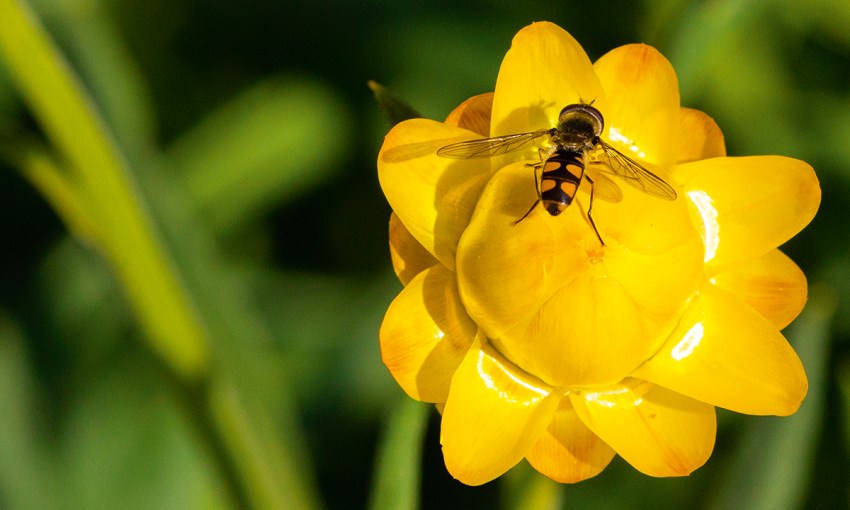We may enjoy flowers for their colourful blooms and attractive scent, but the plants have reasons of their own for being so eye-catching.
Pretty clever: How plants attract pollinators
Approximately 80 per cent of all plants are “angiosperms”, which are plants that produce seed for their reproduction via a flower. The remaining 20 per cent are mainly “gymnosperms”, which produce seed via cones, and ferns which reproduce via spores on fronds.
So, what are flowers? Well, they are the reproductive unit of the angiosperms. Usually, they appear from the terminal growth at the top of the plant – on show for us all to admire. But not all flowers are at the top of the plant, some can be pendulous and hanging, some emerging from the main stem or actual bark, on others they can appear at ground level.
Most common flowers have sepals, an outer cover that encloses the petals of an unopened flower. When the flower opens it exposes the parts of the flower inside that need to be pollinated.
These parts are made up from stamens, which are the male parts that bear pollen, and the carpel, which is the female part that contains the stigma that receives pollen and the ovary.
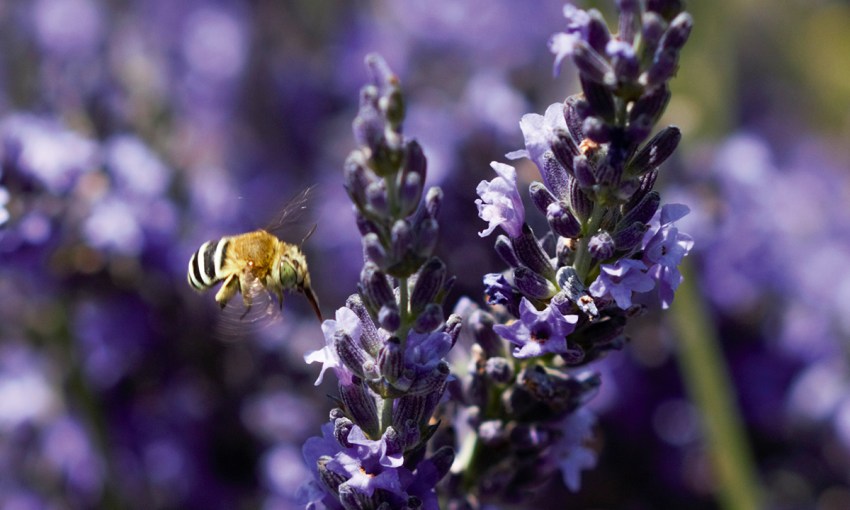
Many types of flowering plants exist, from very short-lived plants to those that live for hundreds of years. The different types of flower are vast from simple, open flowers to the massed flowers held in daisy heads, to the complex designs that orchids have evolved to entice specific pollinators.
Flowers can also be part of complex combinations called inflorescences that take many forms such as panicles, spikes, catkins and corymbs.
So, let’s look deeper into why plants flower; what is the importance of pollination?
Unlike animals, plants cannot move around in search of a sexual partner so they require a helping hand to be able to transfer male sex cells found in pollen to the female reproductive parts of flowers – this is pollination. The pollen then produces a tube to grow from the stigma to the ovule – this is fertilisation.
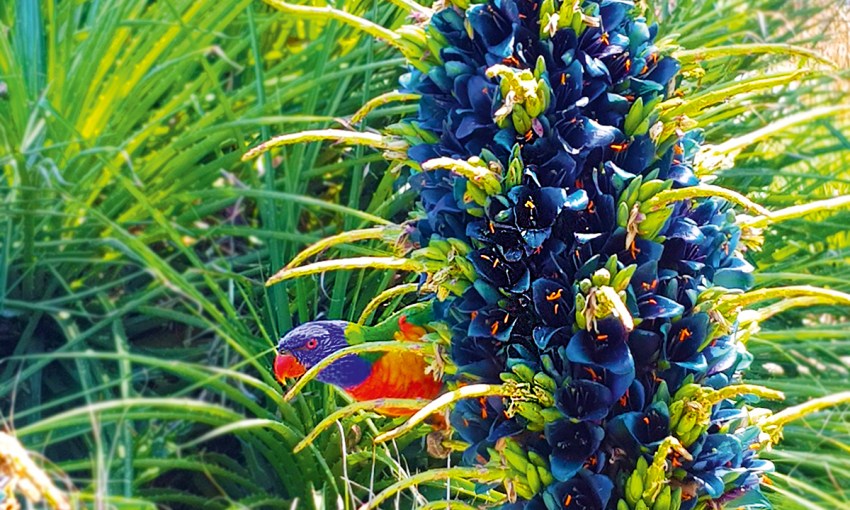
Fertilisation is required for ovules to develop into viable seeds – which often are found in fruits or as nuts. This is not only essential for the lifecycle of a plant, but also essential for countless animals in the world, including us humans.
So, who or what assists the plants to pollinate? These aids are known as “pollination vectors” and include animals such as birds, as well as mammals, wind and water. However, for the vast majority of flowering plants (around 90 per cent) insects complete the task.
So, why do animals and insects visit flowers? They certainly don’t lend out their labour for free. Some pollinators visit flowers for the sweet nectar that provides a tasty snack, some insects such as bees eat the pollen, which is a source of protein and food for their offspring. Other animals are attracted to the colour and smell of flowers.
Other deceptive pollination highlights involve the “evolutionary cunning” of plants where they lure pollinators with the offer of rewards, which turn out to be empty promises! For example, some orchid species attract male wasps to their flower which is a replica of a receptive female wasp.
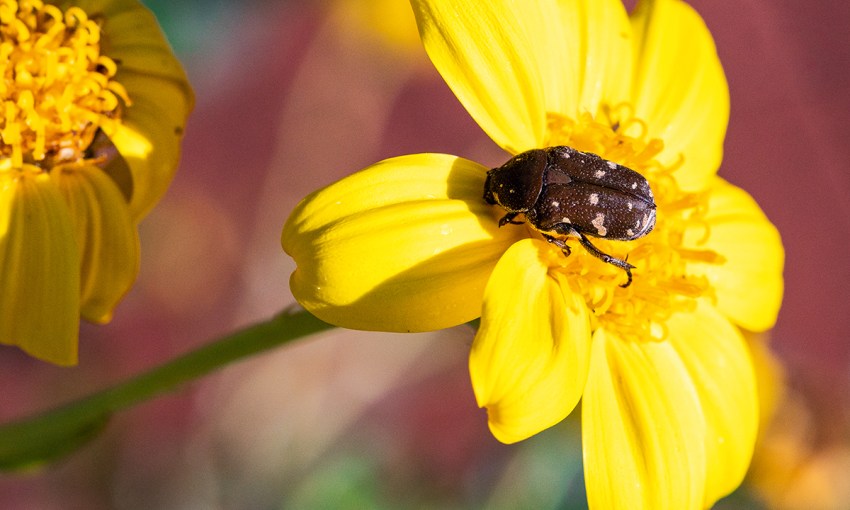
As bees, beetles, wasps, butterflies and flies push into the flower, usually to collect vital energy in the nectar, they touch the male reproductive part of the flower – the stamen – collecting pollen on their body. When they visit the next flower, they brush against the female parts, transferring pollen to the stigma, and so pollinating the flower. After the pollen tube has grown to the ovary, seeds are then produced to continue the lifecycle of the plant.
Pollen may be transferred to the female organs of the same flower or a different flower on the same plant; this is referred to as self-pollination or selfing. Cross-pollination is when pollen is transferred from the stamen of one flower to the stigma of a flower on another plant of the same species.
Some plants, such as tomatoes, lentils and chickpeas can self-pollinate, while others need to be cross-pollinated, such as apples and most almonds. Some plants, such as begonias have male and female flowers on the same plants and are known as “monecious”. There are also plants that are “dioecious” meaning they only have separate male and female plants making self-pollination impossible, such as pistachios.
Flowers come in all shapes, sizes and smells, and with a wealth of strategies to attract pollinators and ensure they return. The chance of effective pollination increases with the number of visits by pollinators. Flowers can have landing platforms and patterns to help insects to locate the rewards and remember where to find them. They can spread the production of pollen and nectar out over the day to make sure pollinators return to them over and over again, and they can also develop pollen that is shaped so that it can be caught on the hairy legs of bees. Clever, aren’t they!
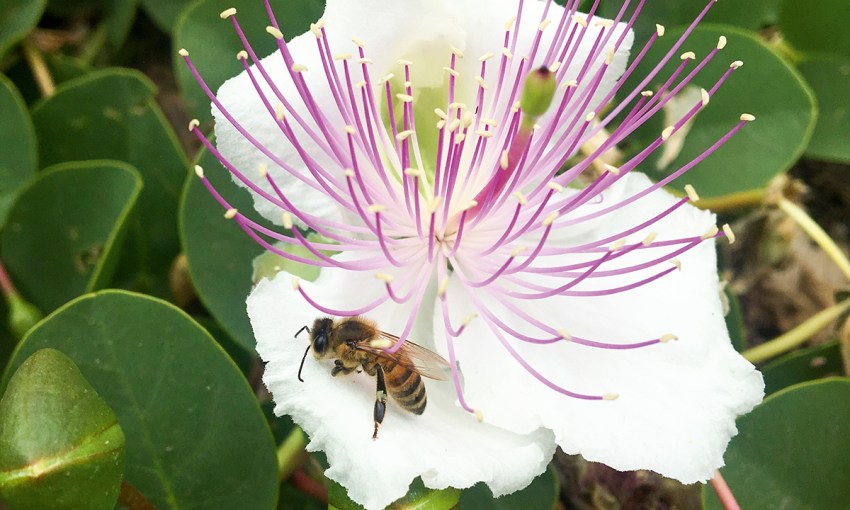
Other pollinators are attracted for various reasons – here are some examples:
Birds drink nectar and are attracted to bright colours such as red and orange.
Bees gather pollen and are attracted to sweet-smelling flowers, and seek bright colours like yellow, blue and violet.
Moths use their long tongues to reach inside flowers to drink nectar and are attracted to sweet smelling flowers with pale colours.
Flies gather pollen from flowers that smell like rotting meat, foetid flowers with dull dark brown and purple patches.
Butterflies seek out brightly coloured flowers such as violet, red and orange and use their long tongue to reach inside to drink nectar. They have good vision but a weak sense of smell.
Bats feed on nectar deep inside the flower and are attracted to large flowers with strong smells.
Beetles such as ladybirds often hide within flowers, waiting for soft-bodied pests such as aphids to visit, and may also consume some nectar as a kind of “fast food”.
Possums feed on nectar and pollen from flowers such as eucalypts to supplement their diet of fruit.
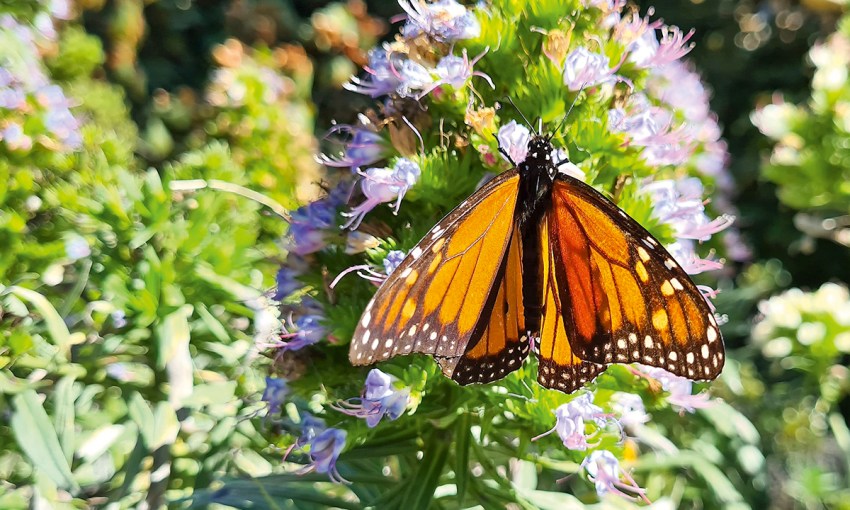
The bees that are most commonly seen around Adelaide are European honey bees Apis mellifera which were introduced to Australia in the early 1800s for honey production and pollination. Honey bees play an important role in the pollination of crops and native plants. However, they are also considered a feral pest as they compete with our native bees, birds and mammals for nectar and with birds and mammals for nesting hollows.
Australia has around 2,000 native bee species, nearly all of which are solitary. This means they live on their own rather than in a hive community. They make shelter and homes in clay walls, soils, bark and open nesting wood hollows which provides shelter and also ideal places to produce offspring.
Blue-banded bees Amegilla cingulate are common in Adelaide. They are extremely fast so can be difficult to spot. Blue-banded bees are in the larvae stage over winter and become active around mid-spring. They are one of a number of bees that can perform “buzz pollination”. They do this by rapidly contracting their indirect flight muscles while they are inside a flower, resulting in a “head banging”. The pollen then falls out and sticks to hairs on the bee’s body. This makes them ideal pollinators for crops such as tomatoes, kiwi fruit, eggplants and chilli, which all benefit from buzz pollination to produce fruit and seed.
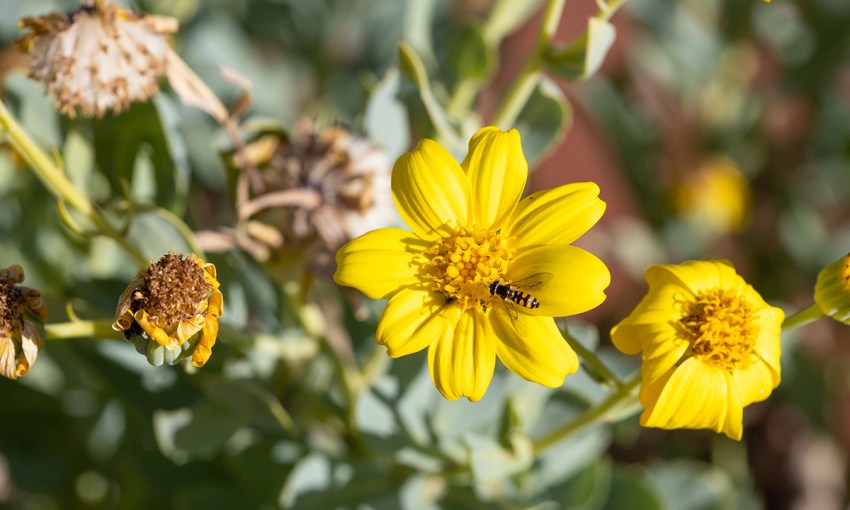
Insect pollinators, particularly bees, are involved in the production of 30 per cent of the food we eat. So, for every third bite you eat, thank a pollinator! Globally, bees and other insect pollinators are essential for food production. Not only do we eat the seeds or the fruit that is the direct result of pollination, but crops such as broccoli, carrots and onions rely on pollinators to produce the seeds for their next generation. Even the meat people eat comes from animals that are fed on flowering plants, which need to be pollinated to continue to give them food.
The world is currently suffering from pollinator declines, due to loss of habitat, loss of food resources, increased pesticide use and reduced biodiversity. Our biological security is vitally important to keep out the harmful pests and diseases that threaten our pollinators, along with strict controls on harmful pesticides.
Cross pollination not only secures the next generation of plants but also increases their vigour and strength. Pollination is also important for the floriculture that brightens our lives. Many of the colourful plants and shrubs that improve our gardens come from constant plant breeding. In many of these cases, this is undertaken by the species Homo sapiens using fine paint brushes and the like to transfer the pollen. But that is another story!
To see plenty of pollinators doing their work visit either one of the three botanic gardens: at Mount Lofty, Wittunga and Adelaide.
John Sandham is collections development officer for South Australia’s Botanic Gardens and State Herbarium.
This story first appeared in the Summer 2020 issue of SALIFE Gardens and Outdoor Living magazine.



